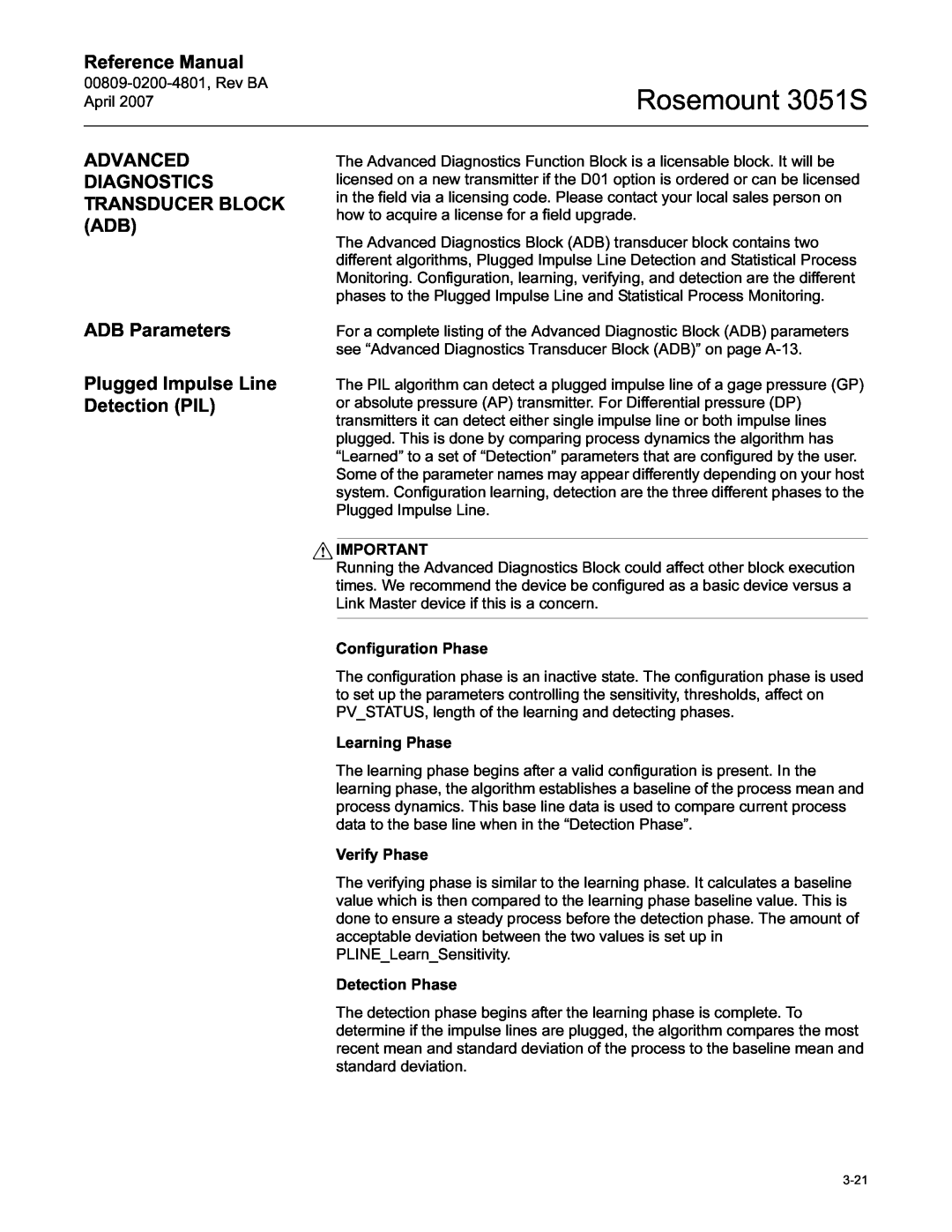
Reference Manual
Rosemount 3051S
ADVANCED DIAGNOSTICS TRANSDUCER BLOCK (ADB)
The Advanced Diagnostics Function Block is a licensable block. It will be licensed on a new transmitter if the D01 option is ordered or can be licensed in the field via a licensing code. Please contact your local sales person on how to acquire a license for a field upgrade.
The Advanced Diagnostics Block (ADB) transducer block contains two different algorithms, Plugged Impulse Line Detection and Statistical Process Monitoring. Configuration, learning, verifying, and detection are the different phases to the Plugged Impulse Line and Statistical Process Monitoring.
ADB Parameters
Plugged Impulse Line Detection (PIL)
For a complete listing of the Advanced Diagnostic Block (ADB) parameters see “Advanced Diagnostics Transducer Block (ADB)” on page
The PIL algorithm can detect a plugged impulse line of a gage pressure (GP) or absolute pressure (AP) transmitter. For Differential pressure (DP) transmitters it can detect either single impulse line or both impulse lines plugged. This is done by comparing process dynamics the algorithm has “Learned” to a set of “Detection” parameters that are configured by the user. Some of the parameter names may appear differently depending on your host system. Configuration learning, detection are the three different phases to the Plugged Impulse Line.
![]() IMPORTANT
IMPORTANT
Running the Advanced Diagnostics Block could affect other block execution times. We recommend the device be configured as a basic device versus a Link Master device if this is a concern.
Configuration Phase
The configuration phase is an inactive state. The configuration phase is used to set up the parameters controlling the sensitivity, thresholds, affect on PV_STATUS, length of the learning and detecting phases.
Learning Phase
The learning phase begins after a valid configuration is present. In the learning phase, the algorithm establishes a baseline of the process mean and process dynamics. This base line data is used to compare current process data to the base line when in the “Detection Phase”.
Verify Phase
The verifying phase is similar to the learning phase. It calculates a baseline value which is then compared to the learning phase baseline value. This is done to ensure a steady process before the detection phase. The amount of acceptable deviation between the two values is set up in PLINE_Learn_Sensitivity.
Detection Phase
The detection phase begins after the learning phase is complete. To determine if the impulse lines are plugged, the algorithm compares the most recent mean and standard deviation of the process to the baseline mean and standard deviation.
